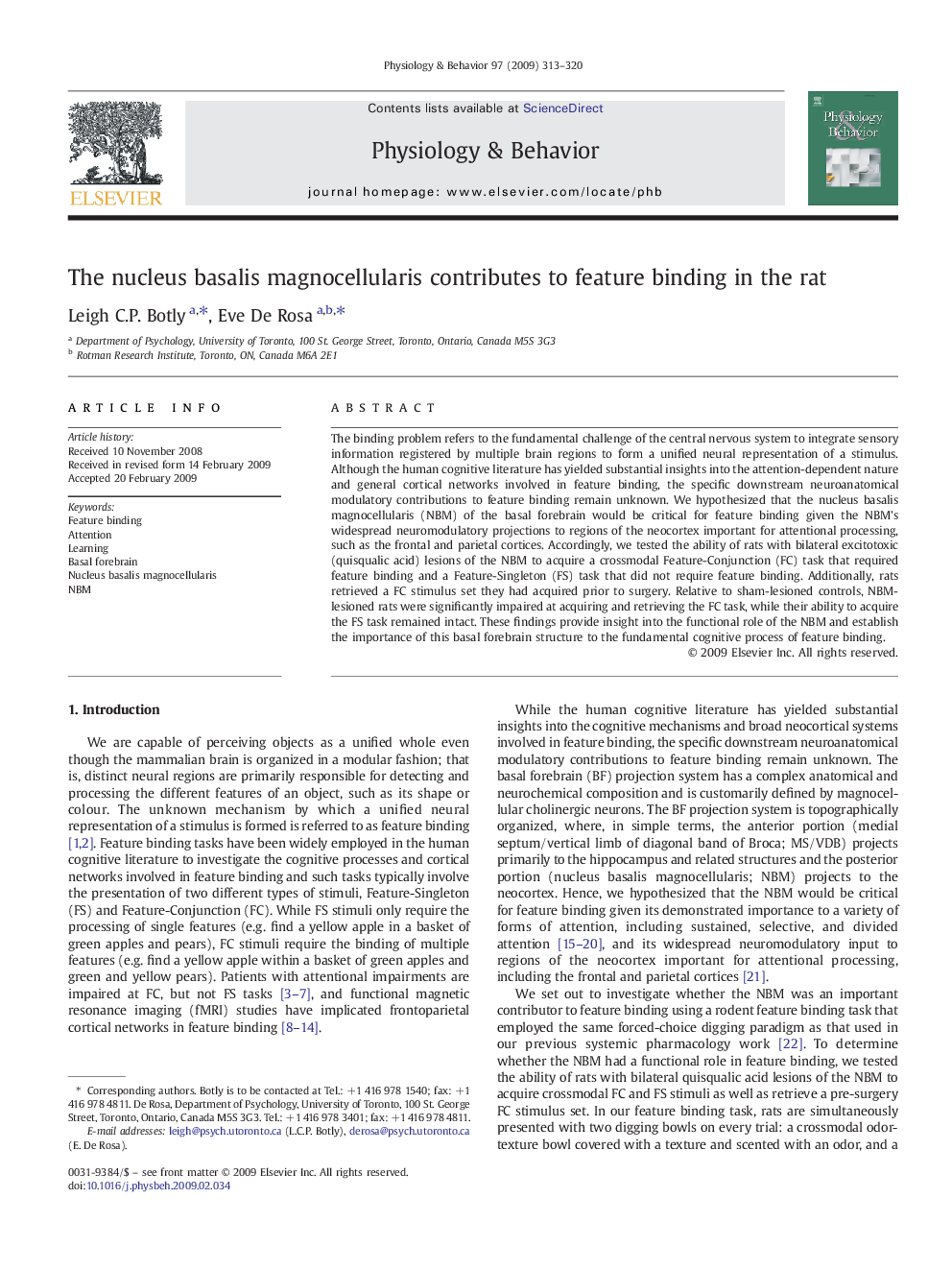| Article ID | Journal | Published Year | Pages | File Type |
|---|---|---|---|---|
| 2845733 | Physiology & Behavior | 2009 | 8 Pages |
Abstract
The binding problem refers to the fundamental challenge of the central nervous system to integrate sensory information registered by multiple brain regions to form a unified neural representation of a stimulus. Although the human cognitive literature has yielded substantial insights into the attention-dependent nature and general cortical networks involved in feature binding, the specific downstream neuroanatomical modulatory contributions to feature binding remain unknown. We hypothesized that the nucleus basalis magnocellularis (NBM) of the basal forebrain would be critical for feature binding given the NBM's widespread neuromodulatory projections to regions of the neocortex important for attentional processing, such as the frontal and parietal cortices. Accordingly, we tested the ability of rats with bilateral excitotoxic (quisqualic acid) lesions of the NBM to acquire a crossmodal Feature-Conjunction (FC) task that required feature binding and a Feature-Singleton (FS) task that did not require feature binding. Additionally, rats retrieved a FC stimulus set they had acquired prior to surgery. Relative to sham-lesioned controls, NBM-lesioned rats were significantly impaired at acquiring and retrieving the FC task, while their ability to acquire the FS task remained intact. These findings provide insight into the functional role of the NBM and establish the importance of this basal forebrain structure to the fundamental cognitive process of feature binding.
Related Topics
Life Sciences
Biochemistry, Genetics and Molecular Biology
Physiology
Authors
Leigh C.P. Botly, Eve De Rosa,
